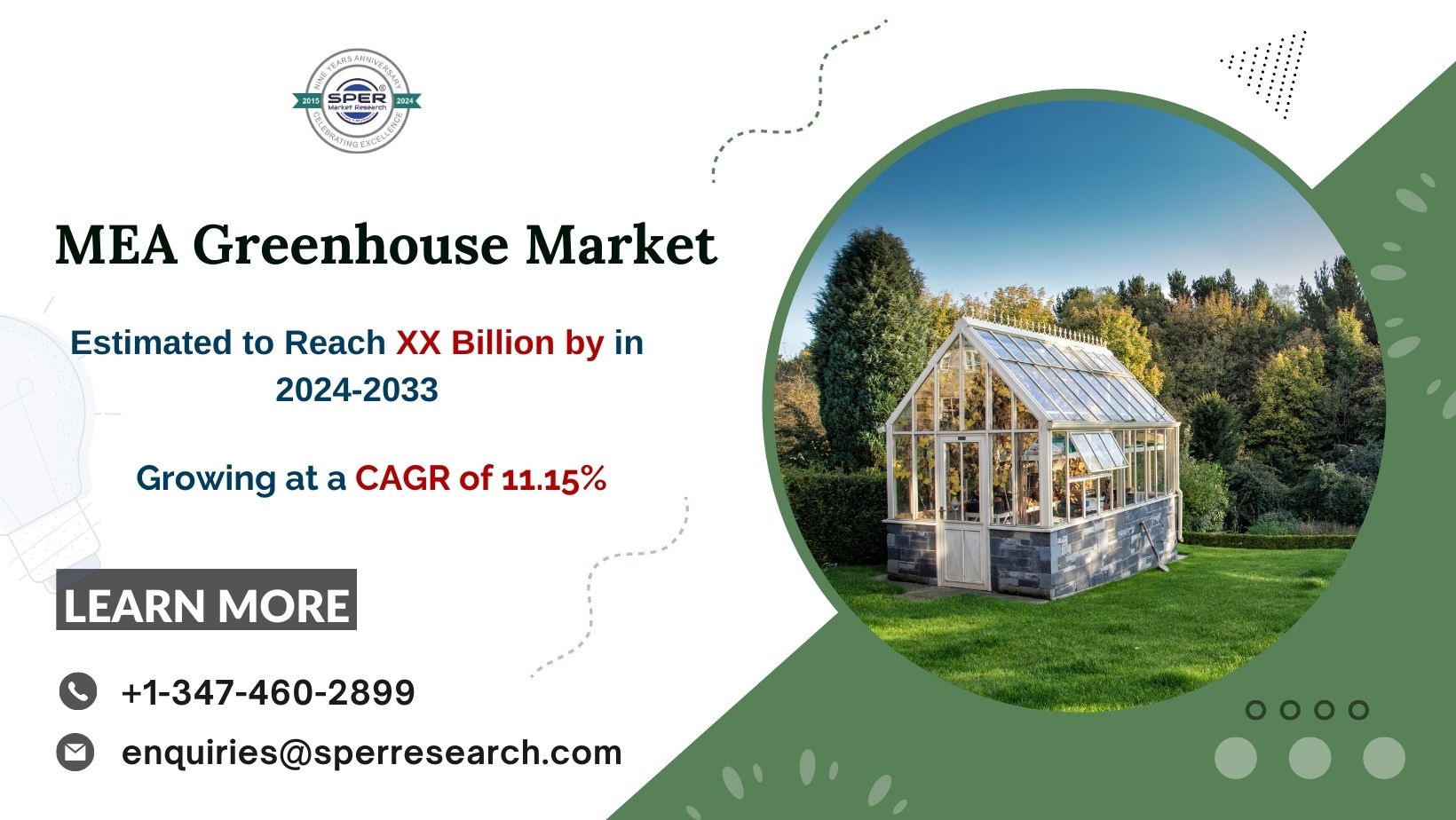A greenhouse is a facility particularly constructed to manage temperature, humidity, light, and ventilation in order to offer the greatest possible growth environment for plants. Usually, it consists of a transparent or clear plastic or glass frame that lets light through but retains heat inside. A wide variety of plants, including flowers, fruits, vegetables, and ornamentals, are grown in glasshouses. They help protect plants from bad weather and prolong growth seasons. The goal is to optimise the development and production of the plants, which can range in size from tiny home versions to large commercial operations.
The Middle East and Africa Greenhouse Market is expected to reach USD XX billion by 2033 with a CAGR of 11.15%, according to SPER Market Research’s report, “Middle East & Africa Greenhouse Market Size- By Equipment, By Type, By Crop- Regional Outlook, Competitive Strategies and Segment Forecast to 2033.”
Drivers: By encouraging the establishment of better cultivars, growing crops in the controlled environment of a greenhouse helps enhance agricultural genetics. Furthermore, a commercial greenhouse utilises less water than an open field. Producers may use as many pesticides and herbicides as needed to protect plants against diseases and other weaknesses since they are not dependent on bees for pollination. In an open field, animals, insects, and locusts can adversely compromise the quality of the harvest. Commercial greenhouse farming, in spite of regulated greenhouse conditions, delivers quicker crop cycles than traditional agriculture. Vegetable harvests produce more than twice as much.
Request For Free Sample Report @ https://www.sperresearch.com/report-store/middle-east-and-africa-greenhouse-market.aspx?sample=1
Constraints: Certain environmental conditions must be met for crops to flourish in greenhouses. Always be aware of the ideal ranges for relative humidity, temperature, and air quality. For them to thrive, the best possible water and light conditions are necessary. Both routine monitoring and progressively modifying the fertiliser amounts to meet the unique requirements of each crop’s growth stage are crucial. Efficient resource management and precise fertiliser application are essential for commercial greenhouse crop cultivation. To achieve this, a detailed examination of the crop, the environment, and the optimal growth circumstances is needed.
The first consequences of the COVID-19 pandemic, which included health concerns, staff shortages, construction delays, and travel restrictions, had a major influence on the greenhouse industry throughout the Middle East and Africa. The manufacturing and operations were hindered by these issues. The pandemic’s emphasis on the need for food security has led to greater government investment for greenhouse technology and help for local food production. This century has seen a rise in the use of digital and automated technology to reduce dependency on labour and enhance efficiency. These technologies include remote monitoring systems and autonomous irrigation.
Key Players in the Middle East and Africa Greenhouse Market:
Saudi Arabia dominates the greenhouse industry in the Middle East and Africa as a consequence of significant government initiatives and investments that raise local food security and productivity. Agra Tech, Inc., Argus Control Systems Ltd., Certhon, Heliospectra Ab, Hort Americas, Llc., Keder Greenhouse, Logiqs, Richel Group Sa, Rough Brothers Inc., and Others are the major companies in this industry.
For More Information, refer to below link:-
Middle East Greenhouse Market Outlook
Related Reports:
Follow Us –
LinkedIn | Instagram | Facebook | Twitter
Contact Us:
Sara Lopes, Business Consultant – USA
SPER Market Research
+1–347–460–2899


